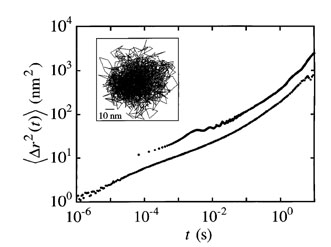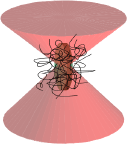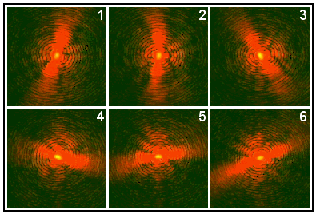|
Microrheology is the study of the
deformation and flow of complex fluids at the microscale. As a graduate
student, T.G. Mason invented an approach in 1993 for deducing local and
macroscopic viscoelastic shear moduli of complex fluids by measuring the
thermal fluctuations of colloidal particles introduced as probes. This
approach, later published in Physical Review Letters in 1995 with his advisor
D.A. Weitz (PRL 74 1250), sparked the modern field of microrheology. We
continue research on glasses using thermal microrheology; our
group also uses laser tweezers to manipulate dielectric probe microparticles
such as polystyrene spheres and wax disks in order to investigate non-linear
rheological properties. |
|
|
Our research focuses on using
advanced optical methods for measuring and controlling the motion of
colloidal probe particles in complex fluids. We typically measure nanoscale
displacements of microscale particles. These optical methods allow us to
explore the high frequency rheological properties of complex fluids that are
not accessible using mechanical rheometers that are limited by inertia. They
also enable us to probe rheological properties in very small volumes. An
exciting emerging frontier is the use of microrheology of naturally-occuring
organelles to examine the mechanical properties at different places within
living cells. |
|
|
In prior work by a group member, Z.
Cheng (now an assistant professor at Texas A&M), we measured the linear viscoelastic
moduli of a polymer solution by probing the rotational diffusion of the axis
of symmetry of a microdisk that has been oriented 'on edge' by linearly
polarized laser tweezers. Applying circularly polarized light to a
birefringent disk in water causes it to spin, as shown by the time sequence
(frames are separated by 1/6 s). |
|
Copyright ©2019 Thomas G. Mason. Webmaster: T.G. Mason
Back to main page


